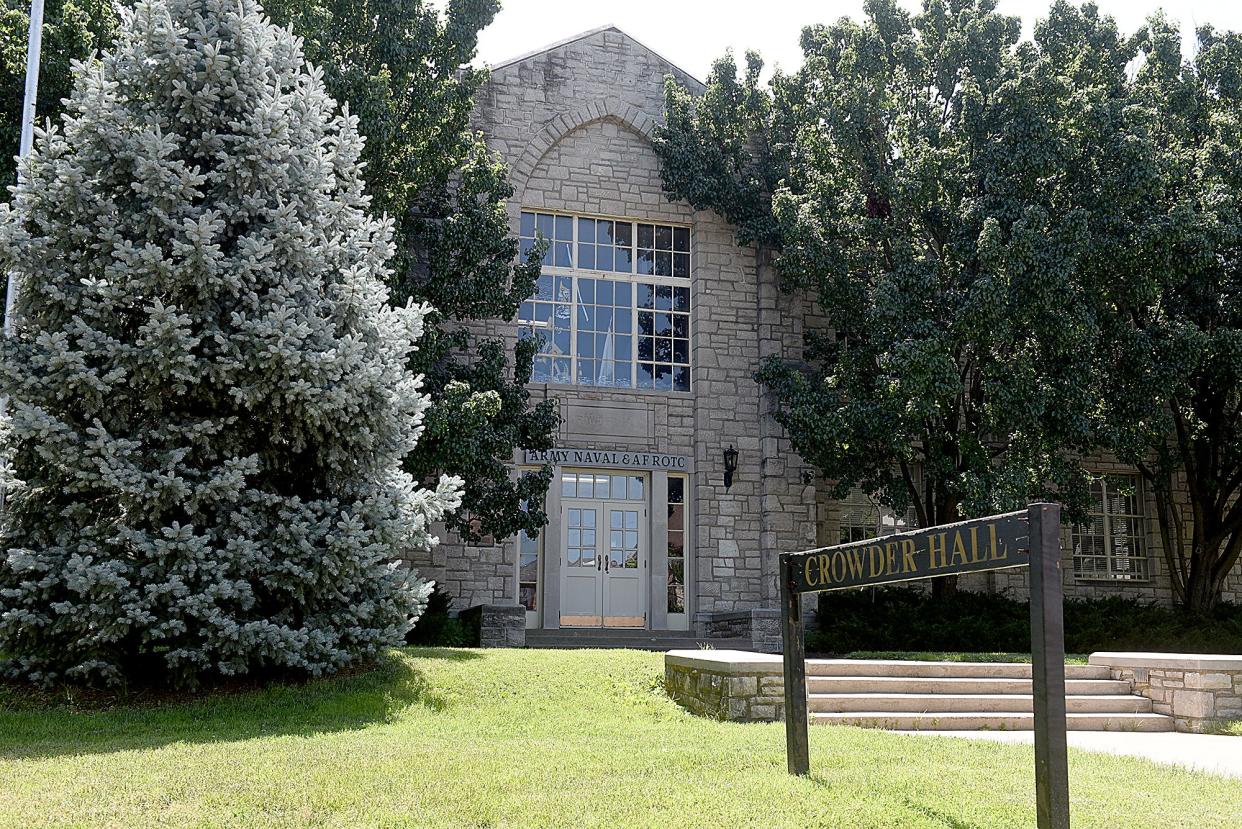Historic Crowder Hall gets reprieve as MU takes 'breather' on demolition plan

Crowder Hall, which houses the University of Missouri's Military Science Department and ROTC programs, is getting a reprieve from demolition at least while officials assess progress on the university's Space Reduction and Strategic Relocation Plan.
"We're taking a breather on the entire demolition plan," said MU spokesman Christian Basi.
As a result of the buildings demolished so far, the university has freed up 318,000 square feet of campus space, eliminated $73 million in deferred maintenance and reduced annual operating costs by $2.3 million, Basi said.
Some other buildings remain scheduled to be demolished in the coming months, Basi said. Those include Manor House, Neff Annex, Mizzou North and the Laboratory Animal Center. That will eliminate another 317,000 square feet of space, $72 million in deferred maintenance and reduce operating costs by $2.4 million.
"What we wanted to do is take a step back and look at the progress we've made," Basi said. "We'll look at what makes the most sense in terms of the future campus needs."
More:These University of Missouri buildings are set to be demolished
The Space Reduction and Strategic Relocation Plan has drawn criticism for involving some historic buildings.
The plan to demolish Crowder Hall also drew criticism from alumni of the military programs, including John Smith of Alexandra, Virginia.
"I like to think that people such as myself made our feelings known to the university decision-makers that buildings are not all the same," Smith said Tuesday.
Crowder Hall can't be touched, he said.
"It's because of the tens of thousands of MU alums who had their initial military training there before going off to war," Smith said.
Smith was asked about the many stairs in Crowder Hall and the difficulty and expense involved in making the building accessible.
"Generally people that join the military are able-bodied," Smith said of the stairs, while adding that buildings and organizations should be accessible to people with disabilities.
Buildings are assessed based on a number of factors, including their functionality and how well-positioned they are for future use, Basi said.
Crowder Hall was built in 1938 and dedicated in 1940.
Anything is possible with the plan going forward, but Basi said he didn't want to give anyone false hope that the plan would change.
"We've made some good progress" on the plan, Basi said. "We want to analyze what we have done and review the plan for the future."
The winter season, when construction slows down, provides good timing for the reassessment, he said.
Roger McKinney is the Tribune's education reporter. You can reach him at rmckinney@columbiatribune.com or 573-815-1719. He's on Twitter at @rmckinney9.
This article originally appeared on Columbia Daily Tribune: Mizzou officials look at progress on Crowder Hall demolition plan

